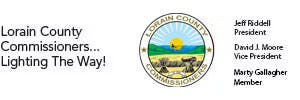He shares some of the things he’s learned about life and business along the way.
I grew up understanding that people are really all the same; it’s just that we each bring certain things to the dance. In my early years on the south side of town, there was a homogenization of people of all descents — Irish, Slovenian, Polish, Italian, black, white, Hispanic. It was a whole melting pot of people that had similar lives: dads working at steel mills and around town, moms mostly home with the kids, and the kids all growing up together.
I never really thought about it then, but growing up in an international community shaped the way I looked at solving problems and helping people.
I grew up understanding that hard work was part of life and that I needed to get an education if wanted to do anything with myself. That’s by and large what really set the agenda for me. I’ve always been a creative person, which is why I love economic development. It lets me work with businesses to solve problems, which I truly love to do.
I kind of fell into my career at the Chamber of Commerce. One day a friend at the chamber asked me to help him come up with a job description for an economic development position he wanted to fill. I worked pretty hard on it. Then he asked me to lunch and offered me the position. If I had known it was for me, I would have written an easier job description.
Collaboration is key. Pulling resources and developing partnerships is what ultimately makes the Chamber of Commerce successful. It makes us more effective on every single project.
One of our best successes was the Ford deal. We sat down with Avon Lake, Sheffield Lake and Sheffield Village and convinced the communities to work together to make it easy for Ford to invest. To have that happen and have Ford agree to spend almost a billion in the facility ... I think when that occurs — and that happened early in the program, in 1988 — it sets the bar for what we can do and how to do it. I’ve spent the rest of my career trying to match it.
Ultimately, you have to be consistently moving forward. Otherwise, you find that when you sit back and start to appreciate yourself, that’s the time when somebody will come and say ‘What have you done lately?’ ”







